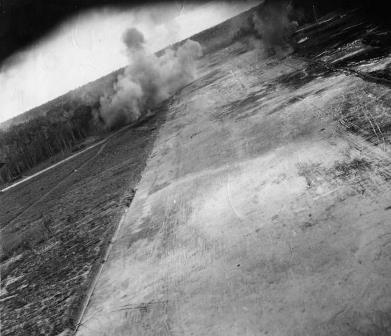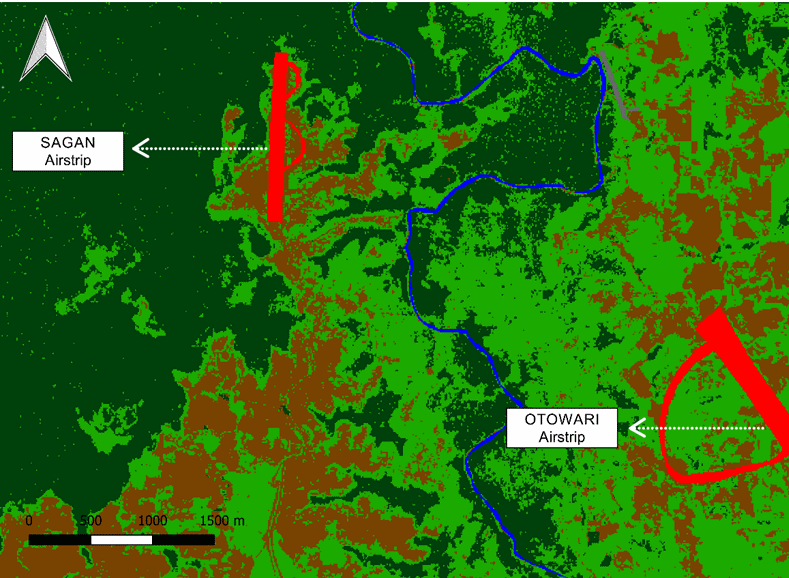
At the Centre for Global Heritage and Development we believe that oblivion is the biggest threat to heritage. We therefore stimulate the development and use of new techniques to detect and record heritage. This report from Roderik Lindenbergh, Assistant Professor at the Faculty of Civil Engineering and Geosciences at TU Delft, describes a project trying to detect a still very unknown military landscape in West Papua by using satellite data and computer learning methods.
In the Second World War, Dutch New Guinea, the current Papua Province of Indonesia, was a strategic battlefront for Japanese and Allied forces in the Pacific War. Airstrips were constructed and bombed and were often quickly abandoned at the end of the war. At least three Japanese airstrips including their surroundings (Mongosah, Otowari and Sagan) stayed relatively free from any activity ever since. As a consequence, the remains of these airstrips can still be found in a jungle setting that is remarkable similar to that during their short operational lifetime. Even nowadays, visiting these airstrips to perform an inventory of left heritage would be very challenging.
In an exploratory study, satellite data is used to characterize the surroundings of these airstrips for two purposes. A first purpose is to obtain insight on how the landscape looked like during the operation of these airstrips, as changes in landscape are assumed to be small. This could for example give hints on what were likely locations for pilots for an emergency landing. Probably the airplane wrecks are still there! The second purpose is to understand how the landscape looks like now. This knowledge could help a reconnaissance expedition in finding its way.
As part of his TU Delft MSc track Geoscience and Remote Sensing, student Dirk van der Valk used three different kind of sources of satellite data to characterize the area: elevation data, spectral data and radar data. All data Dirk used is made freely available by different space agencies like the European Space Agency (ESA). So-called SRTM data collected by the American Space Shuttle, gives elevation at 30 m intervals, and shows where there are hills and flat parts. That indicates on how airplanes would prefer to have approached the runways. The new ESA Sentinel 2 satellites collects so-called spectral data. This data resembles and includes photographic data, but not only samples the terrain in the red, green and blue channel, as the human eye does, but also in different parts of the invisible light. That can be useful to highlight moisture or vegetation. A problem with this kind of data is that West Papua is very cloudy. Therefore Dirk collected data from different dates, and from each date selected the cloud free parts. By mosaicking these parts together he could obtain almost full coverage. A data source that avoids these cloud problems is radar, as radar simply penetrates clouds. Therefore Dirk also included so-called ALOS-PALSAR radar data. Drawback of this data is that it is quite noisy and more difficult for humans to interpret. But Dirk showed it could be used for example to highlight buildings and rivers. After training a computer program, which means that Dirk tells the computer what certain locations are (forest, grass or water for example), the program itself classifies the whole scene in terms of these classes. A result can be seen in the this figure:

As a results of Dirks efforts now a first insight is obtained on how the surroundings of the three airstrips looks nowadays and probably also in the past. Dirk’s successor will compare past and present, by matching and overlaying archived WWII airplane reconnaissance photo’s on the results obtained by Dirk.
